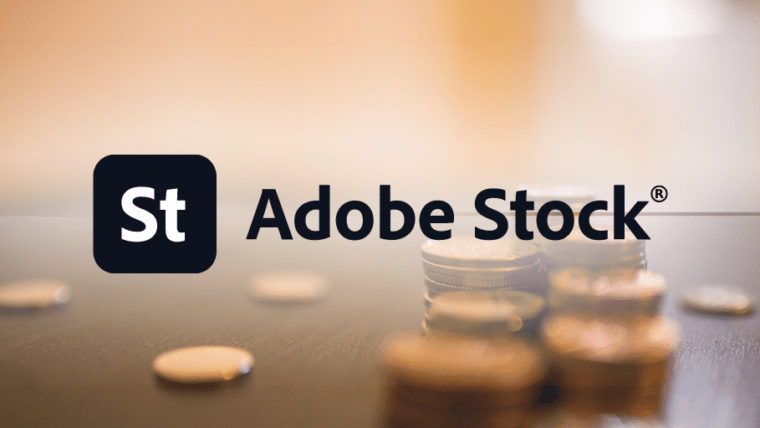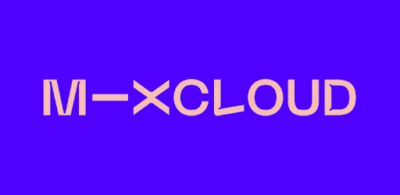Introduction
In today's digital landscape, photographers have an array of online platforms to showcase and sell their creative work. Among these platforms, Adobe Stock and 500px stand out as two popular choices for photographers seeking to monetize their photography skills. Aspiring and professional photographers alike face the critical decision of selecting the right platform that aligns with their artistic vision, maximizes photo sales, and offers the desired level of exposure. This guide aims to provide a comprehensive comparison between Adobe Stock and 500px, empowering photographers to make an informed choice when choosing the ideal platform for selling their photos. We will explore the unique features, licensing options, submission processes, marketing strategies, and community engagement offered by both platforms.
Whether you seek seamless integration with Adobe's creative tools, a vast global reach, a thriving photography community, or specialized networking opportunities, this guide will delve into the essential aspects to help you decide which platform best suits your creative goals. Let's explore the captivating world of Adobe Stock and 500px, aiding you in making the right choice and taking your photography career to new heights.
Also Read This: Is Alamy Good for Selling Photos? Evaluating the Platform’s Effectiveness
1.Platform Overview

| Factor | Adobe Stock | 500px |
|---|---|---|
| Platform Type | Stock photography marketplace within Adobe ecosystem | Photography-focused community and marketplace |
| Integration with Adobe Creative Cloud | Seamless integration with Adobe's creative tools | N/A - Standalone platform |
| Target Audience | Global audience of businesses, designers, and content creators | Niche audience of photography enthusiasts |
| Market Reach | Extensive global reach and exposure through Adobe's marketing efforts | Focused exposure within the photography community |
| Networking Opportunities | Limited networking features | Emphasis on building a strong community of photographers |
| Community Engagement | N/A - More focused on professional use | Active community engagement and peer interactions |
| Licensing Options | Royalty-free and rights-managed licensing models | Royalty-free and rights-managed licensing models |
| Exclusivity Option | Exclusive licensing option available | No exclusive licensing option |
In conclusion, Adobe Stock stands out for its vast global reach, seamless integration with Adobe's creative tools, and potential for exposure to a wide range of buyers. On the other hand, 500px excels in fostering a thriving photography community, offering networking opportunities, and showcasing exceptional photography to a niche audience. Photographers should consider their creative goals, target audience, and preferences for networking and community engagement when choosing between the two platforms.
Also Read This: AI World Connection: Exploring Alibaba and JD.com’s AI Integration
Licensing and Royalties
Adobe Stock:
1. Licensing Options:
Adobe Stock offers two primary licensing options for photographers: royalty-free and rights-managed.
Royalty-Free:
Buyers pay a one-time fee to use the image multiple times without any additional costs. This licensing model grants broad usage rights to buyers.
Rights-Managed:
Buyers purchase specific rights to use the image for a defined period and purpose. The licensing fee depends on factors like usage, size, and exclusivity.
2. Royalty Rates and Payment Methods:
Adobe Stock provides contributors with a percentage of the license price. The royalty rates vary based on the contributor's sales tier, determined by the number of downloads. Payment is made through a convenient payment system, either through PayPal or Skrill.
3. Exclusivity:
Adobe Stock offers an exclusivity option for contributors, allowing them to earn higher royalty rates by making their images available exclusively on Adobe Stock. However, exclusive images cannot be distributed or licensed through other platforms.
500px:
1. Licensing Models Available on 500px:
500px provides both royalty-free and rights-managed licensing options for photographers.
Royalty-Free:
Buyers pay a one-time fee to use the image without restrictions on the number of uses or time frame.
Rights-Managed:
Buyers purchase specific rights to use the image for a defined period and purpose, with the licensing fee varying based on usage parameters.
2. Contributor Royalty Rates and Payment Schedules:
500px offers different royalty rates for its various licensing options. Contributors earn a percentage of the sale price, with payment scheduled on a monthly basis.
3. Exclusive Licensing Options:
500px does not currently offer an exclusive licensing option. Contributors are free to distribute and license their images through other platforms simultaneously.
In summary, both Adobe Stock and 500px provide photographers with diverse licensing options to cater to various buyer needs. Adobe Stock's exclusivity option can offer higher royalty rates for exclusive content but restricts distribution. On the other hand, 500px's non-exclusive approach allows photographers to sell their images on multiple platforms concurrently. Photographers should carefully consider the licensing models and royalty rates of each platform to determine the best fit for their creative goals and potential earnings.
Also Read This: How Difficult Is It to Make Money with Foap?: Everything You Need to Know
Submission Process
Adobe Stock:
1. Image and Portfolio Upload Requirements:
To submit photos to Adobe Stock, photographers must create an Adobe Stock contributor account. They can then upload their images individually or in batches using Adobe's web-based upload interface. Images must meet specific technical requirements, including resolution, file format, and file size, to ensure high-quality standards.
2. Review Process and Approval Times:
After submission, Adobe Stock conducts a thorough review of each image to ensure compliance with technical guidelines and content standards. The review process typically takes a few business days, during which contributors receive notifications regarding image approval or potential rejections.
3. Categorization and Metadata:
Photographers must provide accurate and relevant metadata, including keywords, titles, and descriptions, to aid in discoverability within the platform's search algorithms. Proper categorization and metadata optimization can significantly impact the visibility and sales potential of the images.
500px:
1. Image and Portfolio Presentation:https://hdstockimages.com/keywords-suggestion-tool/
Photographers need to sign up for a 500px contributor account to start the submission process. Once registered, photographers can create and organize their portfolio to showcase their best work. High-quality images are key to standing out on 500px, as the platform curates its collection to feature exceptional photography.
2. Community Curation and Ratings:
500px employs a community-driven curation process, where users, including fellow photographers and enthusiasts, rate and interact with images. Higher ratings and engagement often lead to increased visibility within the platform and potential licensing opportunities.
3. Tagging and Metadata Optimization:
Adding relevant tags and descriptions to each image is essential for improving its discoverability. Photographers should use appropriate keywords and descriptions that accurately represent the content and resonate with potential buyers.
In summary, both Adobe Stock and 500px have specific submission processes designed to ensure high-quality content and optimal discoverability. Adobe Stock has a structured review process, focusing on technical guidelines, while 500px relies on community curation and engagement to highlight exceptional photography. Photographers should consider their preferences and the level of involvement they desire in the curation and metadata process when choosing the platform that aligns best with their photography style and goals.
Also Read This: List of Top Linkedin Companies of India in 2023
Marketing and Promotion
Adobe Stock:
1. Exposure Within the Adobe Community:
Adobe Stock benefits from its integration with Adobe Creative Cloud applications, giving photographers the advantage of a built-in audience of millions of creative professionals using Adobe's software. Images uploaded to Adobe Stock can be easily accessed by designers and content creators within their creative workflow.
2. Marketing Reach and Promotional Efforts:
Adobe actively promotes its stock library through various marketing channels, including social media, email campaigns, and partnerships with other platforms. This extensive marketing reach helps drive potential buyers to the platform and increases exposure for photographers' images.
3. Featured Artist Opportunities:
Adobe Stock highlights outstanding contributors through featured artist showcases, interviews, and collections. Being featured can significantly boost a photographer's visibility, leading to increased sales and recognition within the creative community.
500px:
1. Exposure Within the Photography Community:
500px is known for its focus on building a thriving photography community. The platform's user base consists of photography enthusiasts and industry professionals, providing photographers with targeted exposure to a niche audience that appreciates fine art and high-quality imagery.
2. Showcasing Work in Galleries and Portfolios:
500px offers photographers the ability to create curated galleries and portfolios to showcase their best work. This feature helps photographers present their images in a visually appealing and personalized manner, increasing the likelihood of engagement and potential licensing opportunities.
3. Marketplace vs. Licensing Opportunities:
500px provides a marketplace where photographers can directly sell their images to buyers. Additionally, the platform offers licensing opportunities for photographers through their licensing service, enabling them to reach a broader audience of potential buyers.
In summary, Adobe Stock capitalizes on its vast marketing reach and integration with Adobe's creative tools to attract a broad audience of potential buyers. The platform's exposure extends to millions of creative professionals actively using Adobe software. On the other hand, 500px focuses on cultivating a community of photography enthusiasts and providing photographers with targeted exposure within this niche market. Photographers seeking exposure within the broader creative industry may find Adobe Stock's marketing efforts more appealing, while those looking to connect with a passionate photography community may lean towards 500px. Ultimately, both platforms offer valuable marketing and promotional opportunities for photographers to showcase and sell their work.
"Prague TV Tower and Super Full Moon" by @Karel Dobes #500px https://t.co/5roUbvDLt9
— Karel Dobeš (@KarelDobes) August 6, 2023
Also Read This: Citing Alamy Images: Proper Attribution for Academic and Creative Works
Key Factors for Consideration
When deciding between Adobe Stock and 500px as the ideal platform for selling photos, photographers should carefully evaluate the following key factors:
| Factor | Adobe Stock | 500px |
|---|---|---|
| Earnings Potential | Evaluate royalty rates and payout structures for licensing models | Compare potential sales volume and demand for your content |
| Licensing Options | - Royalty-Free: Multiple uses with one-time fee | - Royalty-Free: Multiple uses with one-time fee |
| - Rights-Managed: Specific rights for defined period | - Rights-Managed: Specific rights for defined period | |
| - Exclusivity Option: Higher royalty rates for exclusive content | - No Exclusive Licensing Option | |
| Market Reach and Exposure | Extensive global reach through Adobe's marketing efforts | Focused exposure within the photography community |
| Community and Networking Opportunities | Networking with industry professionals and designers | Engage with photography community and enthusiasts |
| Submission Process | Review the submission process and review times | Consider level of involvement in curation and metadata optimization |
| Marketing and Promotion | Evaluate marketing reach and featured artist opportunities | Exposure through community curation and interaction |
| Image Curation and Presentation | Professional curation by Adobe | Community-driven curation and peer engagement |
| Target Audience and Niche Markets | Global audience of businesses, designers, and content creators | Niche audience of photography enthusiasts |
| Exclusivity Options | Exclusivity restricts distribution but offers higher royalty rates | No restriction on distribution for licensing |
| Platform Policies and Support | Review copyright, usage rights, and contributor support | Ensure compliance with terms and policies |
In conclusion, the decision between Adobe Stock and 500px depends on various factors, including your target audience, networking preferences, desired level of exposure, and licensing goals. Carefully evaluating these factors will help you make an informed choice and select the platform that best aligns with your creative vision and business objectives.
This video explains Adobe Stock vs 500px: Choosing the Right Platform for Selling Photos
Also Read This: What Should I Shoot for Shutterstock? Tips for Capturing Marketable Images
Community and Networking Opportunities
Adobe Stock:
1. Contributor Community:
Adobe Stock fosters a community of contributors through forums and groups, providing a space for photographers to interact, share experiences, and exchange knowledge. Contributors can engage in discussions about photography trends, licensing strategies, and platform updates.
2. Adobe MAX and Events:
Adobe MAX, the annual creativity conference, offers opportunities for contributors to connect with industry professionals, attend workshops, and gain insights into the latest creative trends. Participation in Adobe-sponsored events can lead to networking opportunities and increased exposure.
3. Collaboration and Partnership:
Adobe Stock's extensive reach allows photographers to collaborate with designers, marketers, and creative agencies who use Adobe Creative Cloud applications. Building partnerships can lead to new projects and increased visibility within the creative community.
500px:
1. Community Engagement:
500px revolves around its photography community, offering a platform for photographers to showcase their work and receive feedback from peers and enthusiasts. Engaging with other photographers' work and leaving comments can create a sense of camaraderie within the community.
2. Licensing and Marketplace:
500px allows photographers to directly sell their images to buyers through the marketplace. Building relationships with potential buyers and repeat customers can lead to long-term business opportunities.
3. Community Quests and Challenges:
500px hosts various photography challenges and quests, encouraging photographers to submit images on specific themes. Participating in these challenges can increase visibility and engagement within the platform's community.
In summary, both Adobe Stock and 500px offer networking opportunities for photographers, albeit with different approaches. Adobe Stock focuses on connecting photographers with professionals in the creative industry, while 500px emphasizes community engagement among photographers and photography enthusiasts. Photographers seeking a broader network and potential collaborations may find value in Adobe Stock's contributor community and industry events. On the other hand, those looking for peer engagement, feedback, and a community-driven experience may find 500px's photography-focused community more appealing. Evaluating these networking opportunities can help photographers choose the platform that aligns best with their desire for community engagement and industry connections.
Also Read This: Laugh Out Loud With Downloading Likee Funny Videos for Free
Frequently Asked Questions (FAQ)
Q1.Which platform is better for selling photos: Adobe Stock or 500px?
A. Both platforms have their strengths and cater to different needs. Adobe Stock is integrated with Adobe's creative tools and offers a wide global reach. 500px focuses on building a photography community and provides networking opportunities. Consider your goals and preferences to choose the platform that aligns with your creative aspirations.
Q2.How are royalties and earnings calculated on Adobe Stock and 500px?
A. Adobe Stock and 500px offer different royalty rates and payment structures. Adobe Stock provides contributors with a percentage of the license price, while 500px has varying royalty rates based on licensing models and exclusivity.
Q3.Can I sell my photos exclusively on either platform?
A. Both platforms offer exclusive licensing options, allowing photographers to sell their images exclusively on their chosen platform. Exclusive content may have higher earnings potential but limits distribution to other platforms.
Q4.Which platform offers better exposure for my photos?
A. Adobe Stock has a vast global reach, thanks to its integration with Adobe Creative Cloud and extensive marketing efforts. 500px, on the other hand, emphasizes building a photography community, offering exposure to a niche audience of photography enthusiasts.
Q5.Are there networking opportunities on these platforms?
A. Yes, both Adobe Stock and 500px offer networking opportunities. Adobe Stock provides opportunities for featured artist showcases, while 500px fosters a photography community where photographers can interact and collaborate.
Conclusion
Choosing the right platform for selling photos is a crucial decision that can significantly impact a photographer's success and exposure in the industry. Adobe Stock and 500px are both reputable platforms, each offering distinct advantages for photographers seeking to showcase and monetize their work. This guide has provided a comprehensive comparison between Adobe Stock and 500px, focusing on key factors that photographers should consider before making their choice. Ultimately, the decision between Adobe Stock and 500px depends on individual goals, preferences, and target markets. Photographers should assess factors such as earnings potential, licensing options, market reach, and community engagement to make an informed choice.It is essential to remember that both platforms present valuable opportunities for photographers to thrive and succeed in their creative endeavors. Whether you prioritize global reach, community interaction, or both, embracing the right platform will allow you to showcase your talent, connect with like-minded individuals, and monetize your photos effectively.
As you embark on your photography journey, remember to continually evaluate your performance and adapt your strategies accordingly. Stay engaged with the photography community, nurture your creative vision, and use the platform that aligns best with your artistic goals. By doing so, you will undoubtedly find success and fulfillment in the world of photography sales and exposure. Happy shooting!















